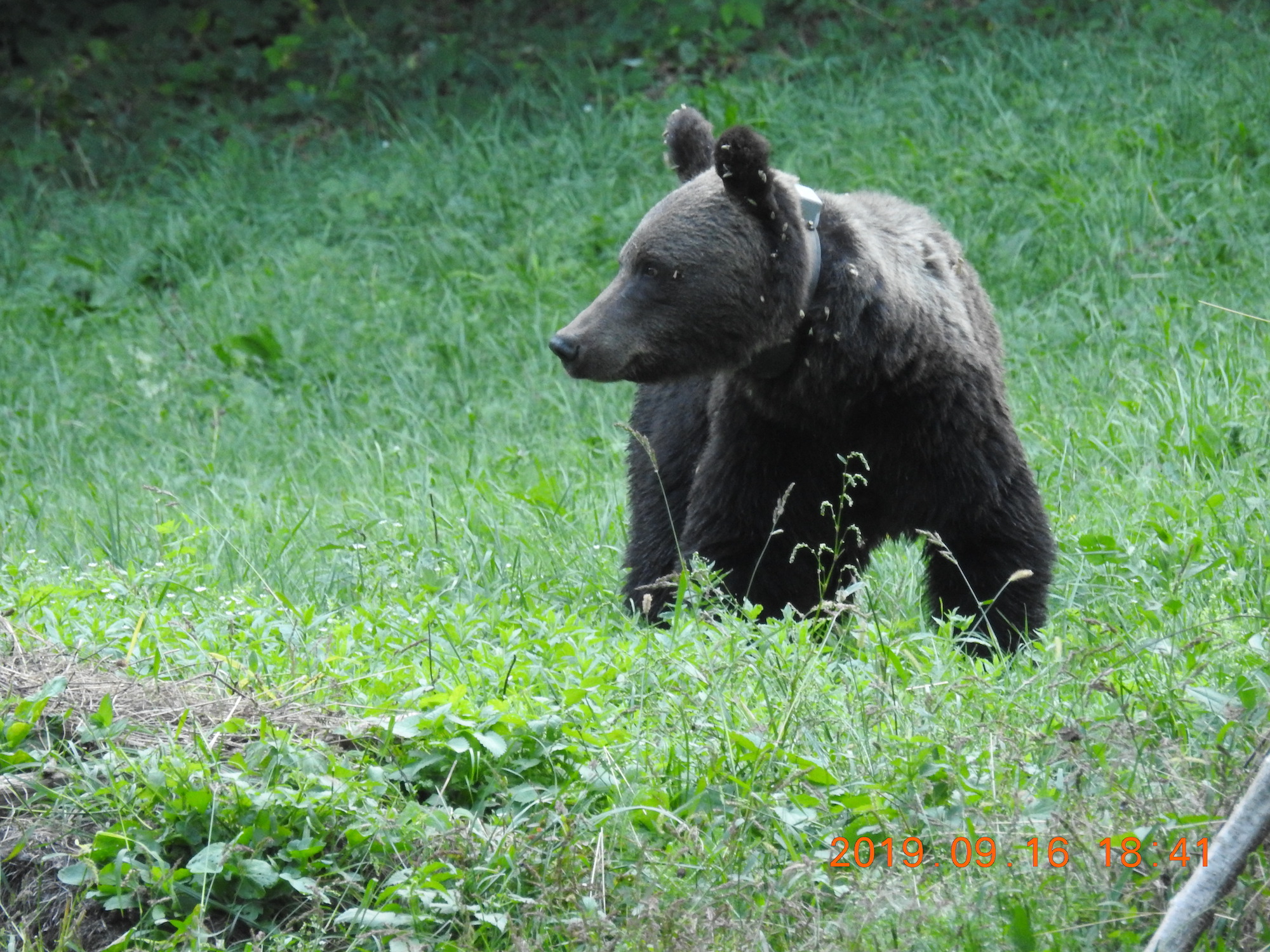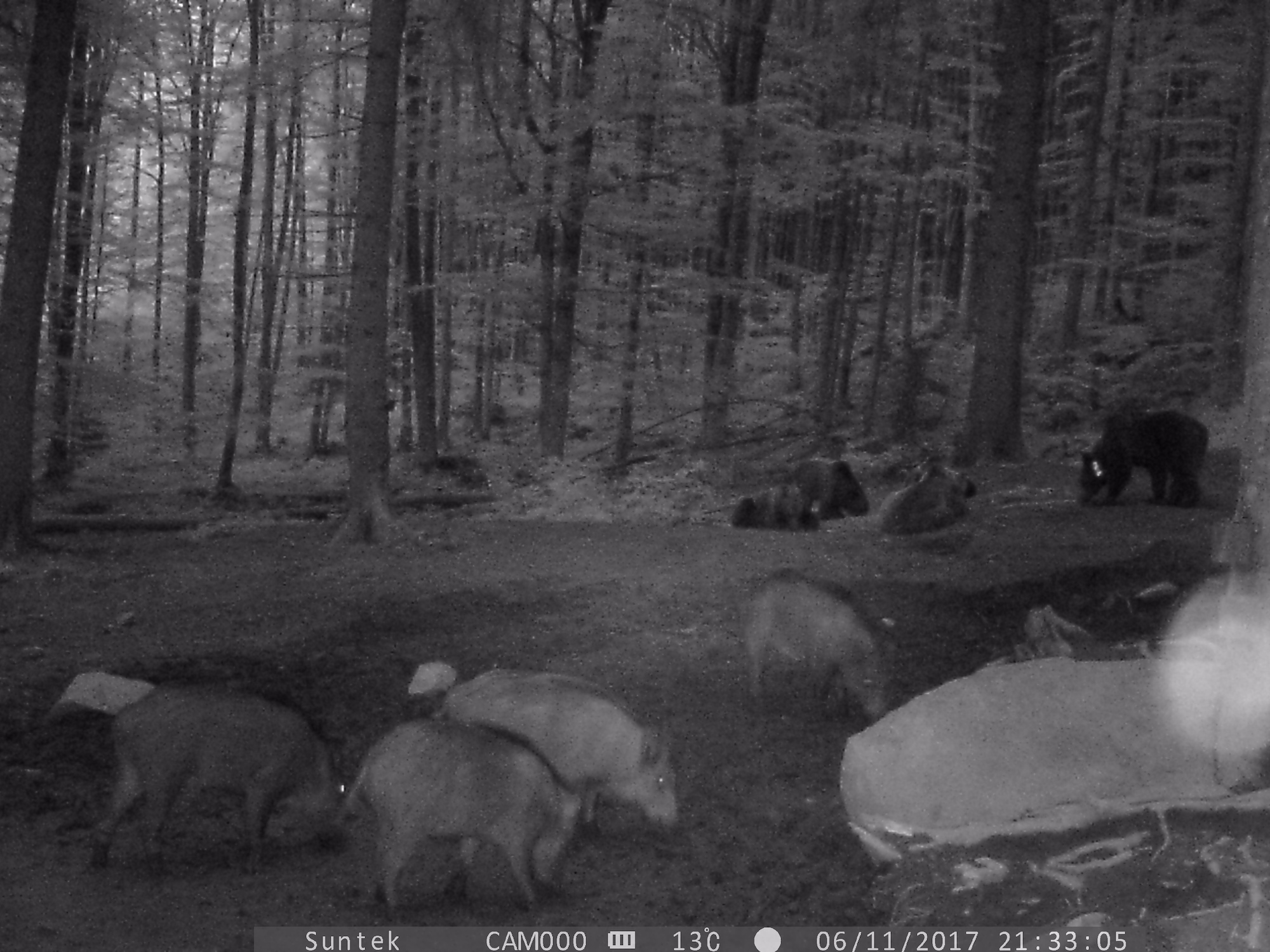“Bear Facts” is a mini-series of short movie clips on brown bear biology and ecology, essentially addressing the conservation and management of the species. Through the series, Milvus Group aims to spread correct and factual information about bears to try to counterbalance the omnipresent negative reports and frequent misinformation in the Hungarian and Romanian mass media. The post was sent by Csaba Domokos, brown bear program manager at Milvus Group – Bird and Nature Protection Association. The first part of the mini-series reveals facts about denning, the second part about bear cubs, and the third part about reproduction.

To improve the knowledge and understanding of bears, a wide array of techniques has been employed. These include visual observations in natural habitats, surveying bear signs, monitoring with camera traps, collecting fecal or hair samples for genetic or hormone analyses, and interviews with people who coexist with bears. However, radio telemetry, whereby VHF or GPS devices are fitted to bears and used to investigate important aspects of their ecology, provides a wealth of information that cannot be obtained with any other technique.
Starting with 2011, as part of an ongoing long-term study of brown bears, Milvus Group, with the assistance of Vets4Wild and in cooperation with local game managers, has captured and collared a total of 31 bears. The capture of bears is done with three cage traps set in different locations, although we have also collared some of the bears we saved from poachers’ snares. Each capture is preceded by a long preparatory procedure in which we also use motion sensor cameras set next to the trap to see which animals are visiting the site.
Females with cubs are not captured. After a bear visits the site repeatedly, we arm the trap. If the bear is captured, we estimate its weight and condition. Based on this, the veterinarian prepares the dose of anesthetics, which are delivered with a dart syringe fired from a dart gun. Throughout the capture and handling procedure, we try to minimize the risk and stress to the bear. The anesthetics we use can only be partially neutralized with a substance that cannot be purchased in Romania, so the bear has to sleep off the effects of the drugs.

Since 2011, the Milvus Group has managed to build a data set consisting of more than 160,000 GPS locations of the studied bears. This data set will ultimately enable us to better understand the species, which is critical for both its conservation and management. Through it, we can better understand how bears use their habitat or the size of an individual’s home range, which can overlap with many other bears’ home ranges.
After we make sure that the bear is successfully anesthetized, we fit the GPS collar. Each collar we use has a release mechanism set to fire 110 weeks (a little over 2 years) after it was mounted on a bear. But we can also trigger the release mechanism sooner via a special radio device.
During the monitoring period, the collars register a GPS location every 60 minutes. Each collar has a unique VHF radio frequency by which we can also localize the equipment. The collar is mounted in a way that it will not harm the animal, even if it gets fatter later on, if it grows a winter coat or if it simply continues growing during the monitoring period. We examine the animal, and collect biological samples.
Telemetry data is also useful to get an idea about bear mortality. Of the 31 bears we have collared so far, at least one was legally hunted, and one was poached. However, at least seven other individuals disappeared under suspicious conditions, their collars’ data transmission ending abruptly. One collared bear was hit by a car. Thus telemetry data can also help to identify crucial crossing points where mitigation measures should be implemented.

A young male bear (coded M8) that was monitored for 362 days had the largest home range of all our marked individuals, totaling 910,000 ha (Minimum Convex Polygon), while it crossed a total of 63 hunting units or the administrative territories of 75 municipalities, located in six counties. Another young male (M12) had the smallest home range of all our males, roaming on 17,600 ha during 771 days of monitoring and crossing five hunting units or nine municipalities.
Of the females, a young female (F4) had the largest home range with 56,800 ha during 381 days of wearing its collar, while it crossed 10 hunting units or seven municipalities. Another young female (F9) had the smallest home range of our females at 5,000 ha during 708 days of monitoring, while it crossed two hunting units and five municipalities.
As soon as the handling of the animal is finished, we retreat from the area, leaving at least one motion-sensor camera pointed towards the sleeping animal to make sure the bear has fully recovered and left the area unharmed.